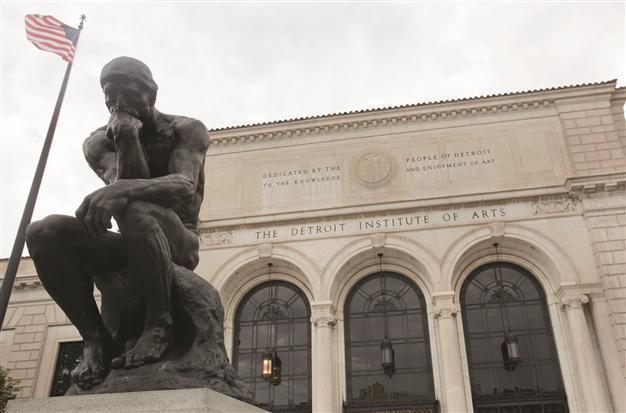Detroit seeks may be rescued with art
LONDON

Detroit Institute of Arts is at the center of a debate, which focuses on liquidation of art to help cover debt. REUTERS photo
As the city of Detroit’s bankruptcy case survived its first legal challenges in a federal court this week, the Detroit Institute of Arts (DIA) remains at the centre of a national debate over what city-owned property can and should be liquidated to help cover its estimated $18billion debt, reported Art newspaper.At some point in the past two months, Christie’s auction house sent two employees to Detroit to assess DIA’s collection, according to two sources with knowledge of the trip. The employees did not meet with museum leadership during their visit.
The auction house did not show up uninvited, according to a source familiar with the situation, but it is unclear who requested Christie’s services. A spokesman for the city manager Kevyn Orr says his office was not involved. He says he is “unaware” if any of the city’s creditors were behind the request, though several sources suggest this is the most likely explanation. A spokeswoman from Christie’s declined to comment. Hürriyet Daily News columnist Gwynne Dyer wrote in his latest article that Detroit had significant value in terms of architecture and art works as the state had once brought in many artworks and built magnificent buildings. “The first decades of the 20th century were the heyday of art deco, the most beautiful architectural style of the modern era. That was also the period when newly rich captains of industry could scoop up bucket-loads of new European and American art: impressionist, expressionist, abstract, the lot – and they lived mostly in what are now the Rust Belt cities,” he wrote.
“So they put up dozens of art deco towers: the Guaranty Building in downtown Detroit is my candidate for the world’s most beautiful office building,” Dyer continued, “They filled their homes with the best of modern art – and, in the end, donated most of it to the local art galleries. Even in Detroit, where so much has been lost, more than half of those buildings are still there. So is all of the art.”
















